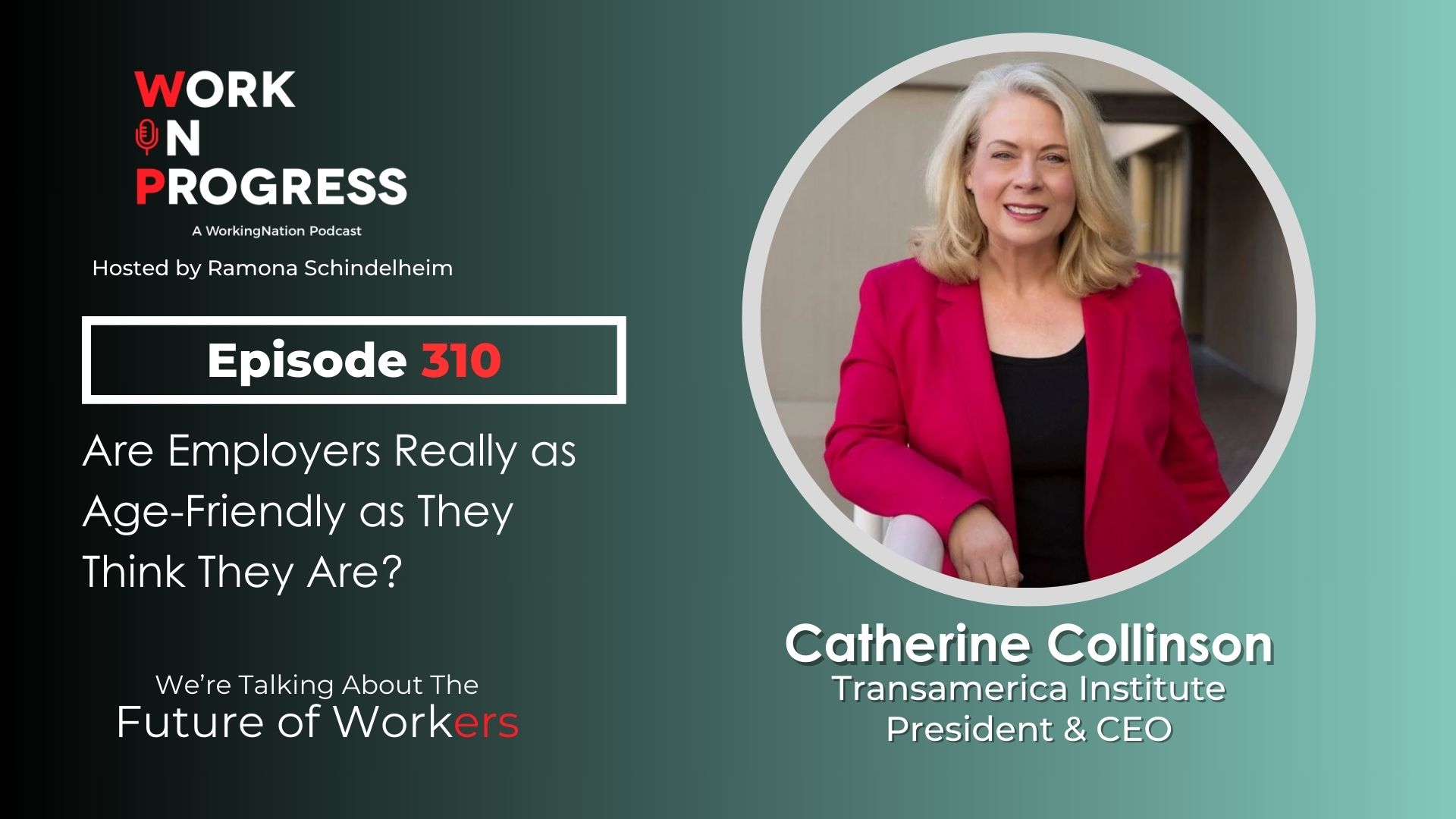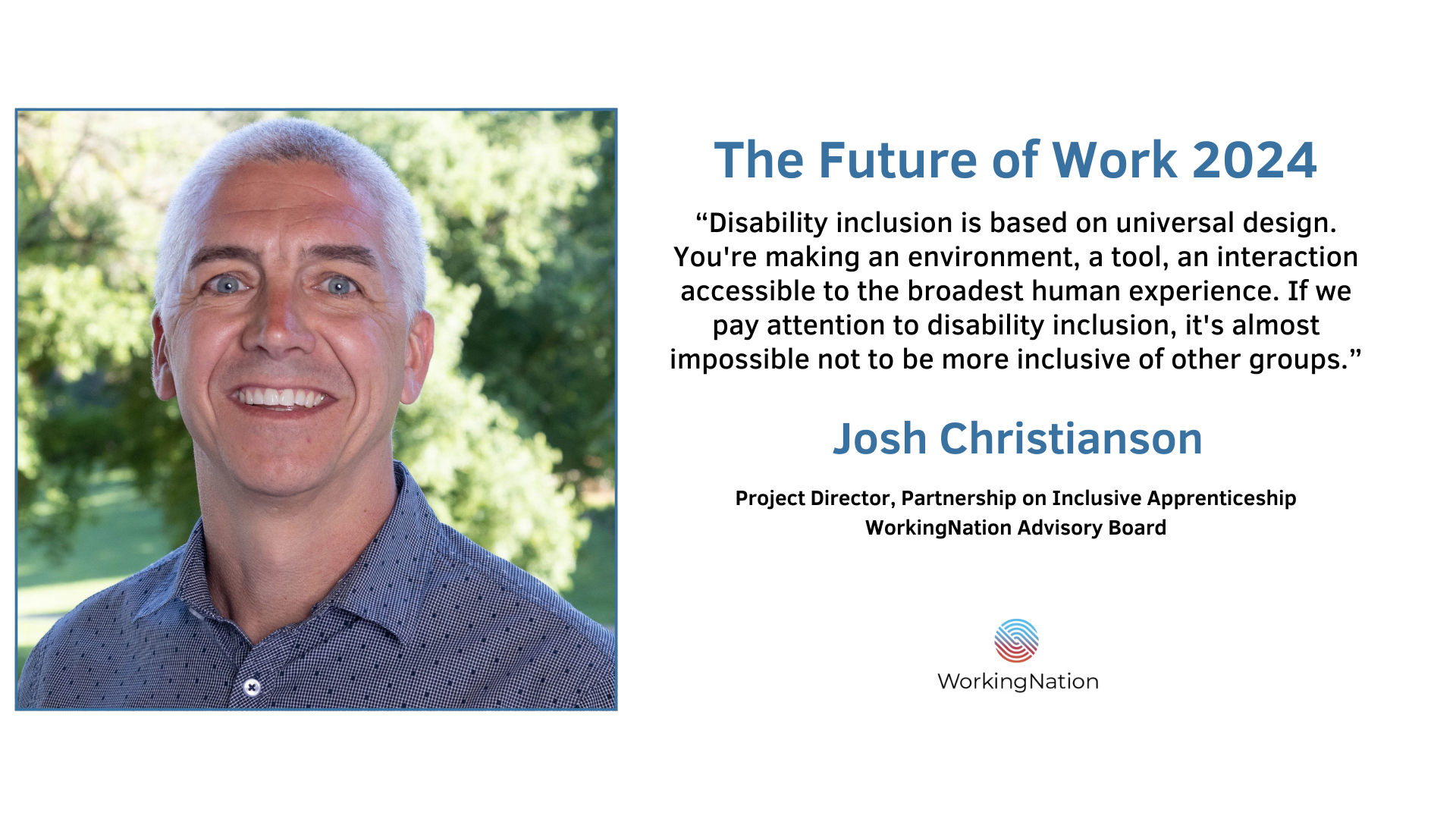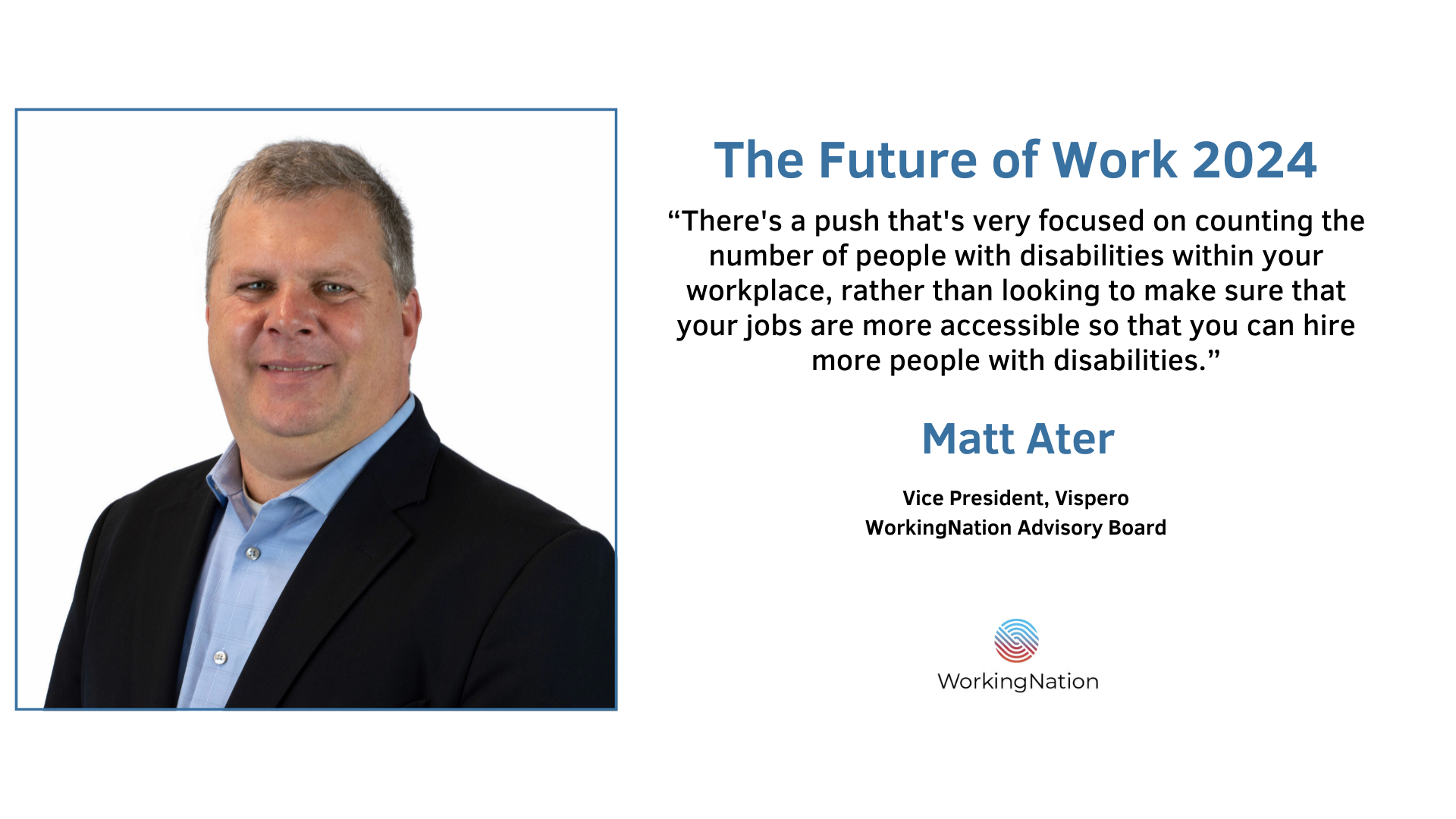The last 18 months have been unprecedented in our modern economy. The shock to the workforce triggered by the onset of the pandemic was quick and devastating—nearly 21 million jobs lost in just six weeks by May 2020, resulting in a jobless rate of 14.7%, a level not seen since the Great Depression. After months of workforce recovery, job growth took a step back last month with the resurgence in COVID-19 infections, particularly the Delta variant.
There are 8.4 million people out of work and looking for a job. Millions more have given up looking. While this is well off the highs of the February-April 2020 recession, these numbers are still higher than the pre-COVID level of 5.7 million unemployed. And it should be remembered that many of the challenges and barriers currently facing workers seeking jobs were around even before the pandemic.
The skills gap, the speed of change in technology, and equitable access to opportunity are all contributing factors, issues we’ve been reporting on for the past five years here at WorkingNation.
To mark this moment, we asked members of our WorkingNation Advisory Board to share their thoughts on how they are looking ahead. Frankly, this group is in the thick of it. They work in a variety of areas including education, nonprofit, policymaking, corporate, and workforce development.
Here is what some of them have to say.
Gerald Chertavian, Year Up

The extreme challenges of the last year and a half offer an opportunity for great change, according to Gerald Chertavian, founder and CEO, Year Up.
He says, “The pandemic has both exposed and exacerbated the economic inequities in our nation and created a passageway through which greater innovation and progress can be made. The opportunity facing us is to redefine who gets included in the next wave of economic recovery and to ensure that opportunity is accessible to all as we emerge from the pandemic.”
Chertavian offers a bright spot in the work being done by OneTen, an initiative that—with the support of corporate partners—aims to move a million Black workers into careers over ten years.
“We are encouraged by the commitment and movement we are seeing by employers to shift to a skills-based approach to hiring, retaining, and advancing talent,” says Chertavian.
“The recent launch of OneTen represents the largest commitment in corporate history to create economic mobility for those who historically have not had access to it. The CEOs of the OneTen organizations are engaged and actively working to change their talent management practices in ways that lead to greater inclusion and equity. It is a journey and we are far from the finish line, although we believe that the movement we have seen over the past year is real and will be sustained.”
Paul Irving, Milken Institute Center for the Future of Aging

Stakeholders need to fully participate to ensure there is access for all to achieve the American Dream, according to Paul Irving, chairman, Milken Institute Center for the Future of Aging.
“We need leaders in business, policy, philanthropy academia, and media to advocate for education, lifelong learning opportunities, and reskilling programs as new American priorities,” says Irving. “The COVID pandemic has elevated awareness of our disparities, divides, and social challenges. It has offered an opportunity for introspection—to think about what is important and what needs to change.”
“Rather than promoting homes and cars and clothes as aspirational and emblematic of the American Dream, we need a movement to shift culture, change hearts and minds, and advance a new public narrative about the power and possibility of education. That is a movement that can truly improve lives, stimulate innovation and economic vitality, and ensure a better future,” he explains.
Mona Mourshed, Generation

How and from where employees do their work has changed significantly due to the pandemic, notes Mona Mourshed, CEO, Generation. “Over the last 18 months, again and again, what employers had long deemed impossible suddenly became possible,” says Mourshed.
Generation is an organization working to “transform education to employment systems to prepare, place, and support people into life-changing careers that would otherwise be inaccessible.”
The rethinking must continue, including around hiring practices, according to Mourshed. “One of the greatest inclusivity and equity challenges in the labor market is how employers hire, particularly for entry-level and intermediate roles,” she says.
“Rather than rely almost exclusively on pedigree-based CVs and AI algorithms, we should create a new norm of demonstration-based interviews and portfolio reviews. Only by seeing how a job candidate performs actual job tasks—before looking at their CV—will employers be able to overcome the many biases—from ageism to ableism—that permeate too many hiring practices today,” says Mourshed.
Martin Reeves, BCG Henderson Institute

Rethinking hiring would help expand the talent pool, according to Martin Reeves, chairman, BCG Henderson Institute. He references pymetrics which utilizes “behavioral assessments to evaluate job seekers”.
“An acceleration in the education and use of new AI-based and neuroscience-based approaches…which short circuit expensive, time-consuming, and highly biased traditional approaches to matching and hiring based on CVs would certainly help reduce the gap,” notes Reeves.
Austan Goolsbee, University of Chicago Booth School of Business

People are reconsidering their places in the workforce, says Austan Goolsbee, Robert P. Gwinn professor of economics, University of Chicago Booth School of Business.
“There’s a major collective rethink going on right now among millions of workers about whether they want to go back to the jobs, industries, locations, etc. where they were before the pandemic arrived.”
Goolsbee notes, “I wouldn’t be surprised if 20 years from now, we look back and a large fraction of people say this was the moment they decided to find an entirely new career or set them on a completely different path. And if the past is any guide, that is going to mean lots of demand for new training and, also lots of heartburn for employers who wanted just to go back to the way it was before.”
Marc Freedman, Encore.org

Employers consistently overlook populations when filling open positions, according to Marc Freedman, president and CEO, Encore.org.
“Even as employment numbers bounce up in this somewhat-coming-back period of late pandemic, two groups are perpetually struggling to find their ways in today’s economy—emerging adults trying to get a foothold and older people trying to hang on until Social Security kicks in.”
“Ageism and bias hits both of these groups, and somehow employers are missing the obvious. Workplaces will be more innovative and relevant when workers represent all segments of our increasingly multigenerational world.”
Freedman explains, “Ageism is ‘-ism’ that all of us, if we are fortunate enough to age, will experience. But young people face it, too. They can’t get hired unless they have experience. They often can’t command a living wage. And they can’t advance if older people aren’t incentivized to move into productive roles suitable to late careers.”
He continues, “Which is why we need older and younger coming together to advocate for age-inclusive workplaces, and why employers need to recognize that age diversity is as critical as gender, race, sexual orientation and ability in assembling inclusive and innovative teams.”
“The future of work is a multigenerational project; we need cogenerated models to ensure that no one is left behind.”
Les Range, independent consultant

There are four components to ensuring that job seekers and workers have the skills that employers need, according to Les Range, an independent workforce and economic development consultant.
Range lists, “Competitive pay to attract and retain high quality instructors at all levels of the education spectrum; more up to date curricula and facilities that meet the everchanging needs of business and industry; more real engagement and investment from employers; and continued investments in workforce partnership development.”
“For motivated people seeking a good job, the key limiting factor is lack of access to quality training programs, particularly in rural areas,” says Range. The digital divide is another equity issue that job seekers confront, notes Range.
Citing Mississippi, specifically, Range says, “Most post-high school skill training is provided by community colleges, either through credit or non-credit training.” He notes, “Credit programs are controlled, i.e., standardized, at the state level making it difficult to meet local industry demands.”
Range also explains that employers must rethink their willingness to give their workforce opportunities to learn and advance. “What could be called a throwback to the agricultural past, there are many industries unwilling to invest in school or college-based training. There remain many companies in rural areas that don’t want employees to obtain national certifications. They fear certifications make it too easy for employees to obtain better jobs elsewhere.”
Despite the obstacles in workforce, Range expresses some optimism about the willingness of stakeholders to be all-hands-on-deck. “I am passionate about helping the full range of workforce training and development partners come together to provide training and career pathways to individuals… These partners include job seekers, business, industry, community colleges, economic developers, adult education, vocational rehabilitation, and others. Workforce development is a team sport.”
Phil Weinberg, president and CEO, STRIVE

There is increased focus on the nation’s deep injustices and inequities caused by systemic racism, says Phil Weinberg, president and CEO, STRIVE. But that focus is not enough, he notes.
“We must hold one another accountable to maintain this focus and convert our words and early deeds into meaningful and sustained action to advance racial equity in the days and years ahead,” says Weinberg.
“Closing these [racial] gaps requires us to tackle many layers of injustice in parallel, demanding bold and creative solutions in areas such as inclusive hiring practices, creation of good jobs with good career pathways, closing the digital divide, scaling high-quality workforce training models, and shifting damaging narratives, among others,” Weinberg continues.
And the responsibility falls on all stakeholders, according to Weinberg. “Each sector of our society—corporate, government, philanthropic and nonprofit—has an important role to play. Even nonprofits like STRIVE, that have been dedicated to economic justice in Black and brown communities for decades, have work to do to fully center racial equity in our services and practices and to play a greater role in shaping the unjust systems within which we operate.”
Michael H. Kelly, The Los Angeles Coalition for the Economy & Jobs

Learning does not have an end date, according to Michael H. Kelly, executive director, The Los Angeles Coalition for the Economy & Jobs.
“Lifelong learning is the most important aspect here, and it requires incentives for companies and organizations to provide opportunities for employees for lifelong learning,” notes Kelly.
“In the U.S., our financial aid has been geared mostly to people who are in a traditional college framework, which is for four years. We need to go beyond that. We need to incentivize people to go for certificates, to go for constant re-education and upskilling.”

WorkingNation is a nonprofit media content provider founded by venture capitalist Art Bilger in 2016. Our mission is to create awareness and education around solutions and, through storytelling, connect the dots for workers, companies, and communities looking to solve their own workforce issues.
WorkingNation released its first piece of content—Slope of the Curve—five years ago this month.











